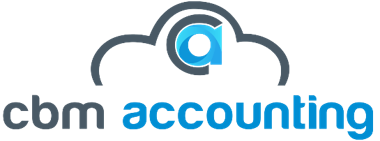[lwptoc]
Planning for retirement isn’t just about saving enough—it’s also about structuring your finances in a tax-efficient way. Understanding the tax implications of your retirement savings and investments can help you maximize your income and preserve wealth. Here’s a guide to key tax considerations and strategies for a financially secure retirement:
Maximizing Pension Tax Benefits
Pensions remain one of the most tax-efficient ways to save for retirement in the UK. Here’s how to make the most of them:
- Tax Relief on Contributions – Contributions to workplace pensions and Self-Invested Personal Pensions (SIPPs) receive tax relief at your marginal income tax rate: 20% for basic-rate taxpayers, 40% for higher-rate, and 45% for additional-rate taxpayers.
- Annual Allowance – You can contribute up to £60,000 per year (or 100% of earnings, whichever is lower) while benefiting from tax relief. If you exceed this, a tax charge applies.
- Carry Forward Rule – If you haven’t used your full pension allowance in the previous three tax years, you may be able to carry it forward.
Tax-Free Pension Withdrawals
Once you reach the age of 55 (rising to 57 in 2028), you can start accessing your pension. Consider these tax implications:
- 25% Tax-Free Lump Sum – You can withdraw 25% of your pension pot tax-free, either in one go or in smaller amounts.
- Income Tax on Withdrawals – Any amount above the tax-free allowance is subject to income tax at your marginal rate, so spreading withdrawals over multiple tax years may help minimise your tax liability.
Using ISAs for Tax-Free Income
Individual Savings Accounts (ISAs) provide tax-free growth and withdrawals, making them excellent for retirement planning. The annual ISA allowance is £20,000. Options include:
- Stocks & Shares ISAs – Allow capital growth and dividend income to remain tax-free.
- Cash ISAs – Useful for lower-risk, liquid savings.
- Lifetime ISAs (LISAs) – Offer a 25% government bonus (up to £1,000 annually) on contributions, but withdrawals are penalty-free only after age 60.
Income Tax on Pension Income
- Taxable Income: Any pension income you receive beyond the tax-free lump sum is treated as taxable income and is subject to income tax.
- Personal Allowance: You can use your Personal Allowance (£12,570 for 2024/25) to reduce the amount of tax you pay on your pension income.
- Tax Bands: Your pension income will be taxed according to the standard income tax bands.
Managing Capital Gains Tax (CGT)
Selling investments outside of tax wrappers (such as ISAs and pensions) may trigger CGT. The tax-free CGT allowance for 2024/25 is £3,000.
- Spread asset sales across multiple tax years to stay within the allowance.
- Transfer assets to a spouse to benefit from their CGT exemption.
- Invest in tax-efficient schemes like pensions or ISAs to avoid CGT altogether.
Structuring Retirement Income Tax-Efficiently
To reduce your tax burden in retirement, consider diversifying income sources:
- Pension income (taxable after the 25% tax-free portion)
- ISA withdrawals (completely tax-free)
- Dividends from investments (taxed at lower rates than salary income)
- Capital withdrawals from taxable investments (only CGT applies, which may be lower than income tax)
- State Pension (subject to income tax but not National Insurance)
Inheritance Tax (IHT) Considerations
If your estate exceeds the £325,000 IHT threshold (£500,000 if passing your home to direct descendants), anything above this may be taxed at 40%.
- Pensions & IHT – Pension funds are usually outside your estate for IHT purposes, making them a tax-efficient way to pass on wealth.
- Gifting – You can give away up to £3,000 per year tax-free, with additional exemptions for wedding gifts and small gifts.
- Trusts – Consider using trusts to manage inheritance tax exposure effectively.
Delaying State Pension for Higher Payments
Deferring your State Pension can increase your payments. For each year you delay claiming, your pension increases by around 5.8%.
Seek Professional Advice
- Independent Financial Advisor (IFA): An IFA can provide personalized advice on retirement planning and tax optimization.
- Tax Advisor: A tax advisor can help you understand the tax implications of your retirement income and develop tax-efficient strategies.
Key Strategies for Tax-Efficient Retirement Planning:
- Maximize Pension Contributions: Take full advantage of tax relief on pension contributions.
- Utilize ISAs: Build up a tax-free ISA portfolio.
- Plan Your Withdrawals: Carefully plan your pension withdrawals to minimize your tax liability.
- Consider Inheritance Tax: Plan for how your pension assets will be passed on to your beneficiaries.
- Seek Professional Advice: Consult with an IFA or tax advisor for personalized guidance.
Final Thoughts
A well-planned retirement strategy considers both savings growth and tax efficiency. By leveraging ISAs, pensions, CGT allowances, and IHT strategies, you can maximize your post-work income while minimizing tax burdens. Seeking financial advice tailored to your situation can help you optimize your retirement plan and secure a comfortable future.
Visit our official website for further assistance: www.cbmaccounting.co.uk





